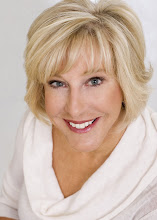Over the last several months, I have had the opportunity to observe several Irish music sessions, where musicians gather to play music together for the sheer pleasure of it. Last week, I attended a session at a local pub, O'Connell's, where world-class fiddler Brendan Mulvihill, and guitarist Brian Gaffney were joined by six of their pals for a friendly session. It goes without saying that they sounded superb. But beyond that, watching them was a dramatic illustration of what harmony LOOKS like.
There was no official leader of the group, because none was needed. Leadership flowed from one musician to the next without a word being spoken. Nobody took more than his number of turns. When in the lead, each guided the group to a favorite tune. In the course of the evening, each musician had the chance to select tunes, to have his musical talents featured, and to support others who took the lead. Some switched instruments depending on what the song called for. Nobody hogged the spotlight, nor had a personal agenda. They spoke words of encouragement to one another and praised whatever tune had just been selected. There was joking and back-patting. They interacted warmly with the few of us who were there to listen. And the music they created was made sweeter by the fact that they were enjoying being with musicians of their own caliber, playing rare tunes they loved that may be too esoteric to play for paid performances.
Can you imagine creating this group dynamic in your own organization? Focusing on the creation of whatever it is you exist to create, for the pure joy of doing so? Developing a team that is devoid of hidden agendas and ego needs? Where leadership is shared, and members encourage one another?
If that seems like an impossible stretch, ask yourself what steps you could take to move in that direction. Does everyone agree on and support what the team exists to do? Who on your team can model shared leadership? How can you reward such behavior? Does every team member get to do what s/he is best at every day? Does someone know each team member well enough to offer encouragement regularly? Research shows these are some of the most important elements needed for a group and its members to achieve their greatest potential. It took a group of Irish musicians sitting around a table in a pub to remind me of what it really looks and feels like.




No comments:
Post a Comment